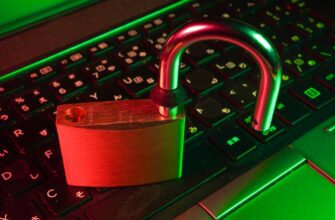- Why Offline Fund Backups Are Non-Negotiable
- Types of Offline Backup Solutions
- Step-by-Step: Creating Your Offline Backup
- Proven Security Protocols for Storage
- Critical Mistakes to Avoid
- Frequently Asked Questions
- What’s the most secure offline backup method?
- Can I use regular USB drives for backups?
- How often should I update my offline backup?
- What if I lose my offline backup?
- Are paper wallets still viable?
- Do I need technical skills to create offline backups?
- Final Security Checklist
Why Offline Fund Backups Are Non-Negotiable
In today’s digital economy, protecting your financial assets from cyber threats is critical. Offline backups (cold storage) create an impenetrable barrier between your funds and online vulnerabilities like hacking, malware, or exchange collapses. Unlike cloud-based solutions, offline methods ensure you retain full control without relying on third parties. This guide explores practical strategies to bulletproof your wealth using offline techniques.
Types of Offline Backup Solutions
Choose the right method based on your security needs and asset type:
- Hardware Wallets: Dedicated devices (e.g., Ledger, Trezor) that generate and store keys offline with military-grade encryption
- Paper Wallets: Physical printouts of QR codes/private keys – simple but vulnerable to physical damage
- Metal Backups: Fire/water-resistant engraved plates (e.g., Cryptosteel) for long-term key preservation
- Air-Gapped Devices: Offline computers never connected to the internet, running open-source wallet software
Step-by-Step: Creating Your Offline Backup
Follow this secure workflow:
- Disconnect from Internet: Perform all steps on a device without network access
- Generate Keys: Use trusted open-source software (e.g., Electrum) to create new wallet addresses
- Record Securely: Write keys on archival paper or etch onto metal – never save digitally
- Verify Functionality: Test recovery with minimal funds before transferring large amounts
- Triplicate Storage: Create 3 copies stored in geographically separate secure locations
Proven Security Protocols for Storage
- Use bank safety deposit boxes or bolted-down home safes with UL ratings
- Implement Shamir’s Secret Sharing to split keys across multiple locations
- Apply tamper-evident seals to storage containers
- Conduct bi-annual integrity checks of physical backups
- Never store decryption instructions with backup media
Critical Mistakes to Avoid
- Photographing keys with internet-connected devices
- Using public printers for paper wallets
- Storing all backups in single locations vulnerable to disasters
- Ignoring firmware updates for hardware wallets
- Sharing storage details with untrusted parties
Frequently Asked Questions
What’s the most secure offline backup method?
Hardware wallets combined with metal backups offer optimal protection through encrypted chips and physical durability, balancing accessibility and disaster resistance.
Can I use regular USB drives for backups?
Not recommended. Standard flash drives degrade over time and lack encryption. Use dedicated hardware wallets or encrypted external SSDs if opting for digital media.
How often should I update my offline backup?
Update whenever you generate new addresses or change wallet configurations. For static holdings, verify backup integrity every 6 months without modifying the original.
What if I lose my offline backup?
Immediately transfer funds to a new wallet using your active device. This is why maintaining multiple authenticated copies in separate locations is crucial.
Are paper wallets still viable?
Yes, but only as a temporary solution or secondary backup. They’re vulnerable to environmental damage and should be replaced with metal backups for long-term storage.
Do I need technical skills to create offline backups?
Hardware wallets simplify the process with user-friendly interfaces. For advanced methods like air-gapped setups, follow reputable video tutorials step-by-step.
Final Security Checklist
Before finalizing your offline backup: 1) Verify key functionality with test transactions 2) Store copies in 3 distinct physical locations 3) Share emergency access instructions only with verified trustees 4) Document procedures in a secure succession plan. Remember: The inconvenience of rigorous offline protocols pales against the permanence of crypto theft.








